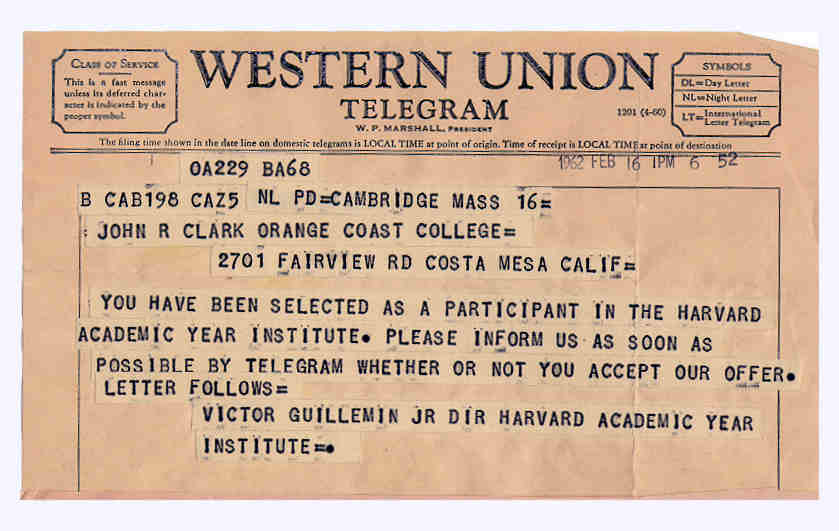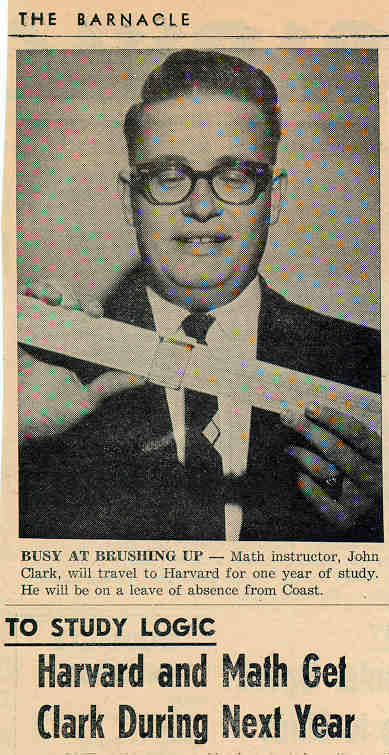1962/1963 NSF Academic Year Fellowship Grant
As a result of Sputnic there was a push to improve the
teaching of science and mathematics in the late 50's and early 60's. Out
of this effort there were several academic year fellowships given out by
the leading universities in addition to many many summer institutes.
With the help of the flexowriter from the LGP-30This country boy decided to get into the game. There were 48 universities offering such grants for the 1962/63 academic year. All application forms were the same except where you entered the name of the institution. I cut a tape that had all the information that was required, and put a pause on the tape where you enter the name.
The Flexowriter worked very well and kept registration of the form as the various pages were entered and type. In order not to appear to have documents produced by machine, there were two errors punched on the tape. One was a misspelled word and another was the transposition of two letters in a word. As the next one was being typed, I could neately correct the previous one in order to appear to be a very carefull person.

It seemed to work.
From 5 Dec 61 to 18 Jan 62 I spent a total of 36 hours
on the Flexowriter grinding out the forms, and $11.04 on postage for certified
mail for returning the applications. {Letters were going for 3 cents in
those days}
Acceptances were received from:
Harvard, Ohio State, Atlanta, Bowdoin, Cornell, Rutgers, Georgia, Washington, Colorado, Brown, Illinois
Placed on the Alternate list by:
Boston, South Carolina, Pennsylvania
Rejected by:
Oklahoma State, Virginia, Arizona, San Diego, Detroit, Syracuse, Bowling Green, Illinois Tech, Stanford, Texas, South Dakota, Michigan, Louisina State, Iowa State, Mississippi, North Carolina, Hawaii, Tennessee
Since I sent exactly the same application to each, I never could figure out how the selection process went. I do know that for that year I had the record for acceptances, and no-one for the 63/64 year had as many.
The grant provided money for tutition, room, books, board,
and $367/month cash and you did not have to play ball on Saturday afternoon.
Got to admit I liked it.
In 1962 knowledge of technology was of value. {Unfortunately for many photographers and members of the math department it consisted of knowing how to use a 20 inch slide rule as shown below.}
